

|
The Problem of Visual
Assumption during World War II
( A practice PCES topic)
By Donna Bolima
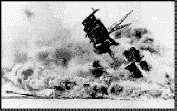
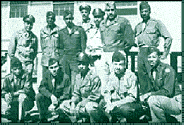
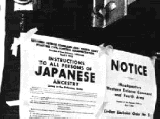
Idea Outline
PROBLEM TOPIC: During WW II citizens of African Americans, Asian Americans and Native Americans underwent difficulty because of visual assumptions
Cause: Assumptions based on Appearance Unawareness of Cultural Difference, Group Think Mentality
Effects: Fear, Limitations and Loss of Life
----------------------------------------------------------------------------------------------------------------------
What happened during World War II? (Background)
| Following WW I Germany &
Japan in contention Germany moves into Europe Japan moves into Asia |
Pearl Harbor
While the Germans were waging a heavy battle in Europe, the Japanese decided to move against the U.S.
At 8 AM on Sunday, December 7, 1941, Japanese carrier-based airplanes struck Pearl Harbor.
The U.S. was now officially in WW II.
--------------------------------------------------------------------------------------------------------------
African Americans During World War II and in past wars
Problem: Blacks were historically considered as inferior based on appearance
Cause: Slavery, Civil War, Competition Jobs
Effects:
--Blacks joined the War effort to prove themselves as equals
--Blacks hoped they could gain new opportunities for employment and training
Colin Powell: Effects 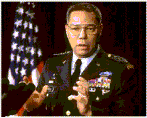
There has never been a conflict in American history when, notwithstanding the conditions of our servitude or bondage, Black men and women did not respond. With each conflict, things got a little better.
In the Past: Buffalo
Soldiers 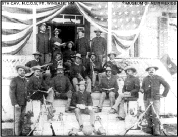
Over 180,000 African-Americans served in the Union Army during the Civil War.
Of these, more than 33,000 died.
The mounted regiments were the 9th and 10th Cavalries, soon nicknamed Buffalo Soldiers by the Cheyenne and Comanche.
Until the early 1890s they constituted 20 percent of all cavalry forces on the American frontier.
In the Past:
Tuskeegee Airmen 
African Americans sought to improve their status by military service
Training of black officers and training of pilots, medical and engineering units.
A million blacks served in the war
Dorie Miller won the Navy Cross, the highest honor awarded to a black serviceman for his heroism at Pearl Harbor in 1941.
Considerable discrimination/Segregated Units. Serious riots erupted at several camps, where black soldiers protested against poor conditions and racial discrimination.Encarta® 98 Encyclopedia. © 1993-1997 Microsoft Corporation. All rights reserved.
In Reality, after WWII….
Blacks found they were still not equals
Segregation was still a reality in the service
The fight for equality and civil rights was still forthcoming in the years ahead
--------------------------------------------------------------------------------------------------------------
Native Alaskans During War II
Problem: Assumption that all Alaskan Natives are alike.
Cause: Not enough awareness of Cultural Differences
Effects:
--Men, Women and Children were relocated to Southeast Alaska to live in Canneries
--Loss of Life
Bomb Attack on Islands
1942, Japan attacked the United States in Alaska.
The Battle was North in the Aleutian Chain.
Japanese occupied Attu and Kiska.
Dutch Harbor was also Bombed (shown right).
Unanagan (Aluet)

By far the most well-documented hardship of the Unanagan was the forced evacuation of the people during WWII.
The Unangan survived under adverse conditions when shipped to abandoned fish canneries in Southeast Alaska.
Battles rages on...
With the Japanese attack on Pearl Harbor and the invasion of the western Aleutian, both naval and army units were rushed into Alaska.
By 1942 over 150,000 troops were in Alaska.
The headquarters for the military command was established in Anchorage.
War Time Casualties: Effects
Unfortunately, of the group of Unanagans relocated, two thirds died of disease. --The rest returned home after the war.
Unanagan peoples were once a population of 25,000 and dropped to 8,000 within 60 years.
--------------------------------------------------------------------------------------------------------------
Japanese Americans During World War II
Problem: Looked like the enemy, so assumed they were.
Causes: Competition for Jobs, Fear
Effects: Internment, Loss of Culture
Anti-Alien Association: Competition
Blatant Racism: Fear
leads lobbying groups to push for internment
Competition for Farming Markets a factor
"Guilty By Reason of Race"
Roosevelt’s Decision:
Tags & Numbers
This order gave the military free reign to designate military areas and to remove any persons considered a danger. Though theoretically Executive Order 9066 could be used to remove German and Italian Americans only the Japanese community was forced to undergo mass evacuation and imprisonment.
By June 1942 more than 110,000 Japanese (more than 70% of them American citizens) had been forced from their homes into temporary assembly centers. These assembly centers such as Camp Harmony were ramshackle affairs built at racetracks and fairgrounds. From the assembly centers the Japanese were moved to ten concentration camps scattered in the more inhospitable desert regions of the West.
Executive Order 9066 Facts
Only Two Suitcases were allowed per person
If you were at least 1/4 or more Japanese, you had to go
This internment did not pertain to those living off the West Coast or in Hawaii.
Selling Out
120,000 interned & two thirds American born
Many quickly sold businesses
Relocation
Puyallup Fairgrounds
Then to Camp Life in Dessert Areas
Riots and Dissention at Tule Lake
Many Japanese Americans ask what does it mean to be an American?
The 442nd become an all Japanese American Unit
Drug Abuse/Alcoholism is at 20% in some camps
Katonk! Irony at Home:
A Hawaiin Story: The Hawaiins were a different lot than the Japanese
Americans. Culturally they were more expressive and outgoing. One
day an American and a Hawaiin got into a fight. The American fell on the
ground with a thud or a "katonk!" From that time forward, the
Hawaiins called the American Soldiers Katonks. But some time later when
the Hawaiins heard that the Americans were fighting despite the fact that they
had loved ones locked up at home, they stopped teasing the Americans and from
that time on supported one another.
Education went on as usual in camps; there were many teachers there
More than one family stayed in one room hastily built barracks
Family in
Barrack
Disloyalty never an issue
After School Activities
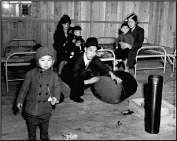
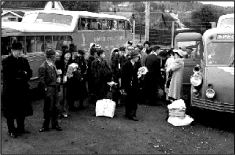
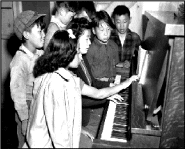
Constitutional Rights
Mitsue Endo & J.A.C.L (Jpn. Amer. Citizens eague) challenged the courts and won.
With the realization that the government could no longer hold U.S. Citizens in jail, Japanese were allowed to go home in organized groups.
-------------------------------------------------------------------------------------------------------------------------------
Other Camp Sites: Silenced History
"Justice Department Internment Camps"
For non-citizens which included Kibei, Buddhist ministers, newspaper people and other community leaders, 2 27 U.S. Department of Justice Camps (most at Crystal City, Texas, but also Seagoville, Texas; Kooskia, Idaho; Santa Fe, NM; and Ft. Missoula, Montana) were used to incarcerate 2260 "dangerous persons" of Japanese ancestry taken from 12 Latin American countries by the US State and Justice Departments.
Approximately 1800 were Japanese Peruvians. The U.S. government wanted them for potential hostage exchanges with Japan. After the war, 1400 were not allowed to return to their former countries (ie. Peru). Over 900 Japanese Peruvians were "voluntarily" deported to Japan. 300 fought it in the courts and were allowed to settle in Seabrook NJ.1
--------------------------------------------------------------------------------------------------------------------------
In Conclusion...
African Americans, Japanese Americans and Unanagans wanted to express, survive or prove loyalty to their country to overcome the problem of visual assumption.
All three groups had differences in the types of obstacles they encountered as loyal Americans.
Other ‘different’ groups were also interned.
Solution
Do not make assumptions based on appearance
Resist Group Think; think critically about issues
Be aware and knowledgeable of the contributions and sacrifice of different U.S. groups
------------------------------------------------------------------------------------------------------------------------------------
CONCEPTS TO CONSIDER
Group or Peer Pressure
How does ‘Group Pressure’ affects decisions?
Fear of being different or alone
Fear of reprisal
Need for Approval
Things to Consider
Many times Peer Pressure won out and many people although opposed, went along with the group Those that did oppose had to be prepared to lose their lives or be harassed
Take time to consider all the issue angles, so you don’t make decisions based on group think